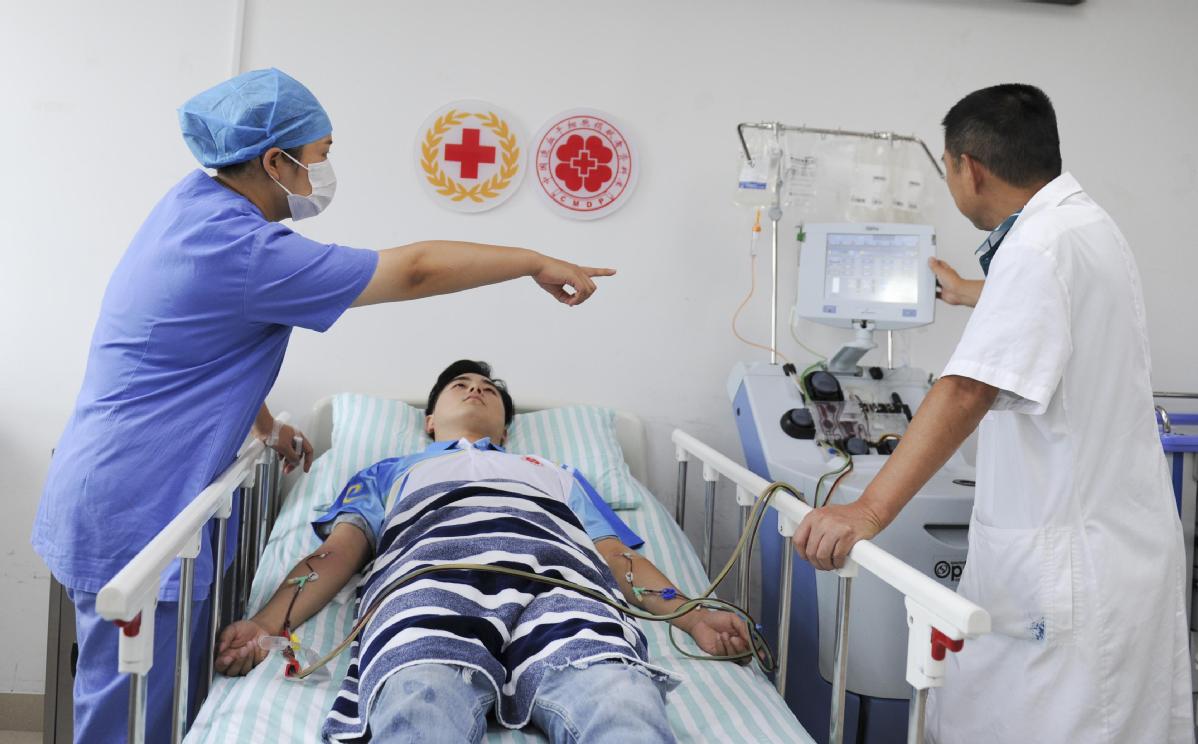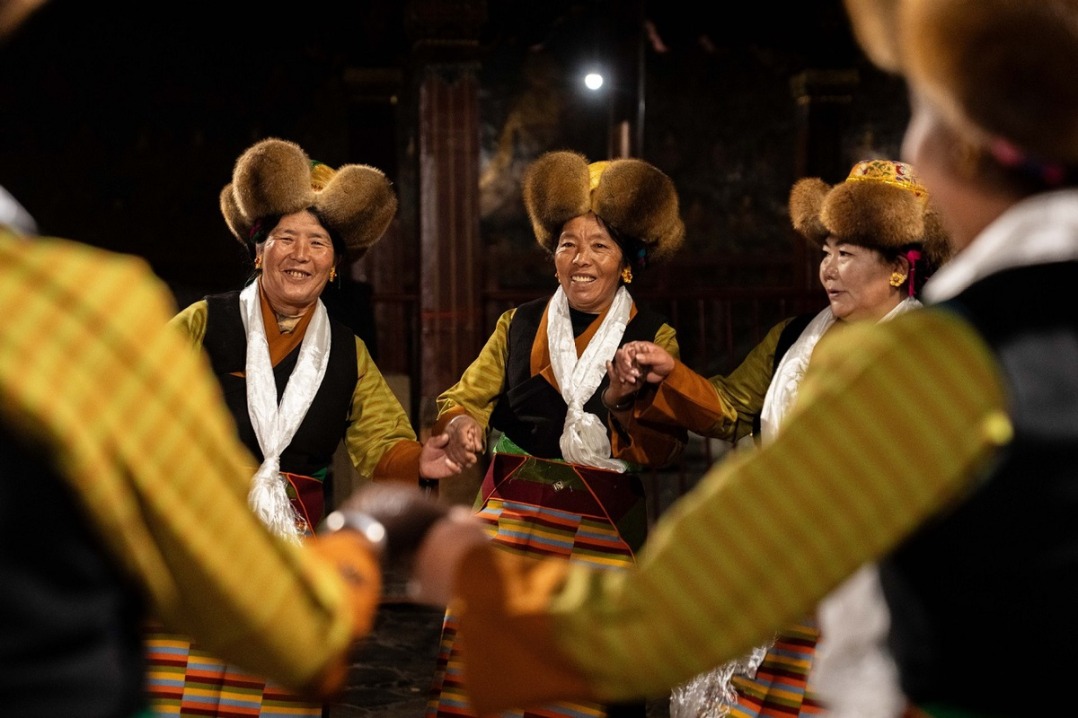'Beijing Protocol' goes abroad to benefit more patients


The 4th hematopoietic stem cell transplantation seminar of Chinese Society of Hematology, Chinese Medical Association was recently held in Beijing and many international and domestic experts in the field gathered to discuss the latest therapeutic schedule and progress.
After the meeting, directors and their teams from eight hematopoietic stem cell transplant centers in New Delhi, Hyderabad and Mumbai, India, conducted a three-day clinical exchange at the Peking University Institute of Hematology, and studied the so-called "Beijing Protocol."
It was created by Huang Xiaojun's research team from Peking University People's Hospital and was named "Beijing Protocol" by the Worldwide Network for Blood & Marrow Transplantation in 2016.
"Beijing Protocol" has since become one of the main methods of haploidentical bone marrow transplantation and is an important treatment for various medium and high-risk leukemias. It has been adopted as clinical routine applications in other countries like Italy, Israel, and Japan.
Ranjit Kumar Sahoo, a physician from All India Institute of Medical Science has completed three months of training at the Peking University Institute of Hematology supported by American Training Scholar Program and returned to India to promote the "Beijing Protocol".
Leukemia is a malignant disease of the hematopoietic system, and it is top caner killer among patients under 35 years old. Every year, China reported 70,000 new cases of leukemia. Bone marrow transplantation is the most effective way of curing leukemia and other malignant blood diseases, 70 percent-80 percent of leukemia cases require bone marrow transplantation.
However, insufficient donors for bone marrow transplantation remained as a problem worldwide.
According to Zhang Xiaohui, deputy director of the Institute of Hematology, Peking University People's Hospital, only 20 percent to 30 percent patients can find matching donors of human leukocyte antigens (HLA).
"The probability of finding a match among unrelated people is as low as 1/100,000 to 1/150,000. It is like looking for a needle in a haystack – it takes time and money.
Thus, many patients have no choice but to wait in despair and pain," he said.
Over the past decade, professor Huang's team had created "Beijing Protocol" and made "parental donors" and "children donors" possible, solving the shortage of bone marrow donors.
Haplotype transplantation, as Zhang said, has gradually become the routine method of bone marrow transplantation worldwide. In China, haplotype donors account for 59.4 percent in 2018, making it the top donor source. Meanwhile, the national transplantation rate is also growing by 20 percent to 30 percent per year.
"Clinical results show that the 3-year overall survival rate for haplotype matching transplantation is 74 percent to 79 percent, and the overall survival rate of aplastic anemia was 86-89 percent, which is consistent with the efficacy of sibling and non-consanguinity transplantation, and with better effects than chemotherapy," Zhang said.
A representative of the Indian visitors said: "We will bring 'Beijing Protocol' to India to bring benefits to Indian patients."
- Macron's China visit strengthens ties, boosts cooperation on global issues
- CPC issues revised regulations on its working bodies
- Melodic harmony under gingko tree
- Media tour explores Xiamen's tech surge and smart manufacturing
- Discover Xiamen with beauty of ecological governance
- Conference aimed at strengthening global organ donations opens in Guangzhou




































